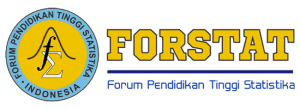| JOURNAL ACCREDITATION (SINTA) |

| TOOLS |
 |
 |
| COLLABORATION (Mou) |

All the submitted manuscript is first reviewed by an editor. It will be evaluated by the editor whether it is suitable for VARIANCE: Journal of Statistics and Its Appliacations focus and scope or has a major methodological flaw and similarity score by using iThenticate. All the manuscripts must be free from the content plagiarism.
Before submitting articles to reviewers, those are first checked for similarity/plagiarism tool, by a member of the editorial team. The papers submitted to VARIANCE: Journal of Statistics and Its Appliacations must have similarity level less than 30%
The submitted manuscript will be reviewed by at least two reviewers (peer-reviewers) for check contribution, originality, relevance, and presentation. The reviewer will give the comment and submit the scientific value. Reviewers' comments are then sent to the corresponding author for necessary actions and responses. The reviewer will improve the contents of the manuscript and each reviewer is given three (3) weeks to conduct the review. If within the specified time the reviewer does not respond, the review process is replaced by another reviewer with the same qualifications.
Review Outcomes
Every submitted article is independently reviewed by at least two peer-reviewers (Double Blind Peer-Review). After being reviewed, there will be four kinds of editor decision based on the reviewers' recommendation:
Reject - Rejected manuscripts will not be published and authors will not have the opportunity to resubmit a revised version of the manuscript to VARIANCE: Journal of Statistics and Its Appliacations.
Resubmit for Review - The submission needs to be re-worked, but with significant changes, may be accepted. However, It will require a second round of review.
Accept wtih Revisions - Manuscripts receiving an accept-pending-revisions decision will be published in VARIANCE: Journal of Statistics and Its Appliacations under the condition that minor/major modifications are made. Revisions will be reviewed by an editor to ensure necessary updates are made prior to publication.
Accept - Accepted manuscripts will be published in the current form with no further modifications required.
The suggested decision will be evaluated in an editorial board meeting. Afterward, the editor will send the final decision to the corresponding author.
The reviewers' and editor's suggestions will be conveyed to the author, who will then have an opportunity to revise the paper. A manuscript returned to an author for revision can be held for a maximum of four weeks.
Correspondence
All correspondence concerning manuscripts should be directed to the Editor of VARIANCE: Journal of Statistics and Its Appliacations Open Journal System (OJS). The Editor will direct all correspondence to the lead author; the lead author is responsible for sharing communications with other authors.
After Accepted
The accepted paper will be edited by Editor of VARIANCE: Journal of Statistics and Its Appliacations in Pattimura University.